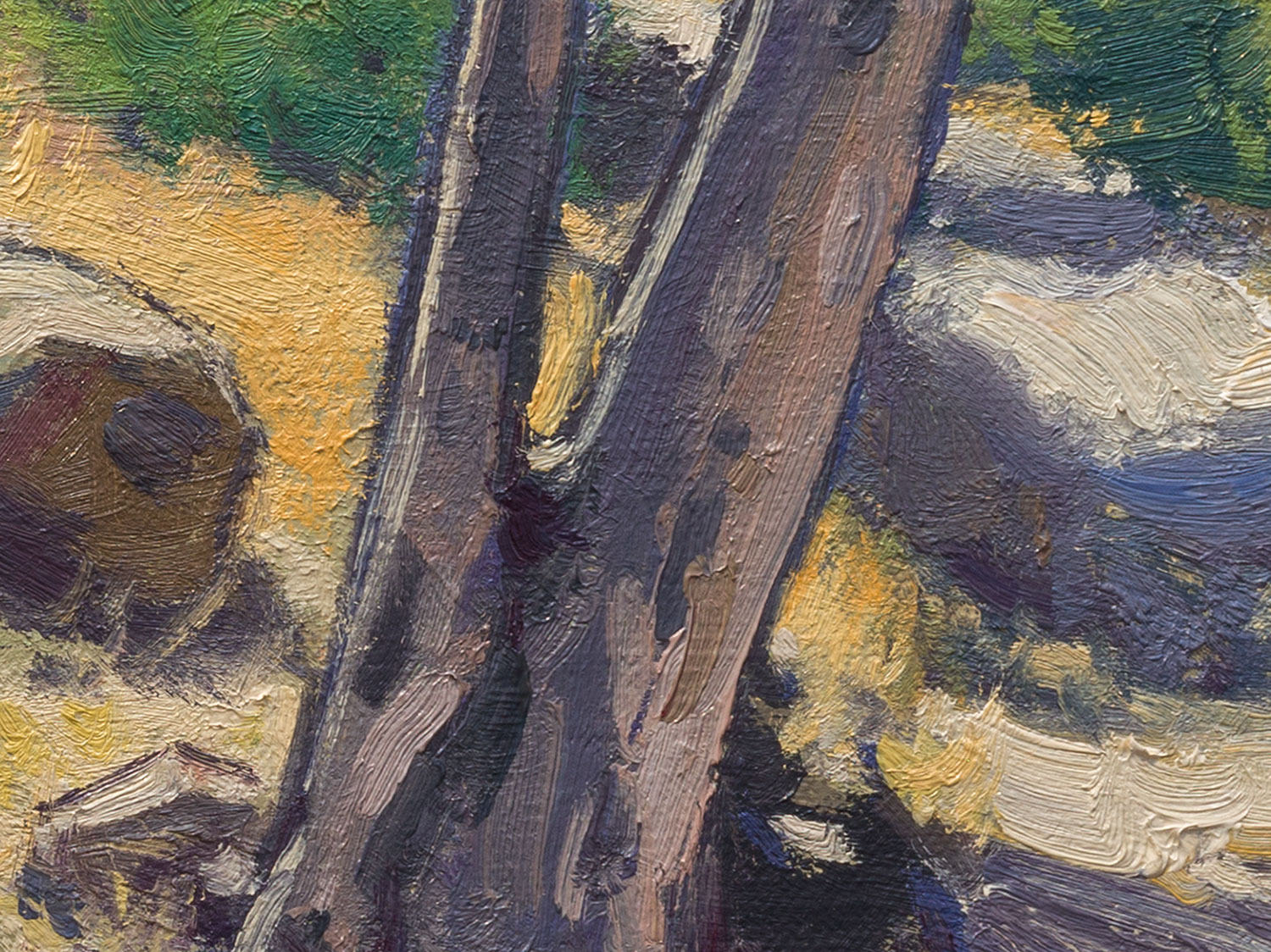
With practice over time, we can begin to get more efficient with our brushwork — saying more with less. We can give the impression of more detail with fewer brushstrokes.
1. Before you begin mixing your colors, spend a few minutes looking at your scene, visualizing how you want to handle each area of the painting. For example, which brush might you use to fill in the grassy meadow? How thickly or thinly do you want to apply the paint?
And speaking of brushes, I happen to have a great quality set available from Trekell.com. Click here to check it out.
Does that sound good to you? If so, here are a few ideas to improve your brushwork.
Four ways to improve your brushwork:
1. Before you begin mixing your colors, spend a few minutes looking at your scene, visualizing how you want to handle each area of the painting. For example, which brush might you use to fill in the grassy meadow? How thickly or thinly do you want to apply the paint?
2. While you’re painting, think about what you want each brush stroke to accomplish. Instead of mindlessly dabbing, try to have a purpose for each brush mark.
3. Study works you admire by other artists (in person if possible). How did they lay down their paint? How might you apply their methods into your own work?
4. Try a brushstroke counting exercise. Choose a subject and paint it using as few brushstrokes as possible. (Bigger brushes and plenty of paint will be helpful with this.) Count each stroke as you go. Then maybe do a second painting of the same scene with even fewer strokes. (Incidentally, my Landscape Painting Fundamentals course at Sentient Academy has a lesson in Chapter 8 that demonstrates this very exercise.)
And speaking of brushes, I happen to have a great quality set available from Trekell.com. Click here to check it out.
